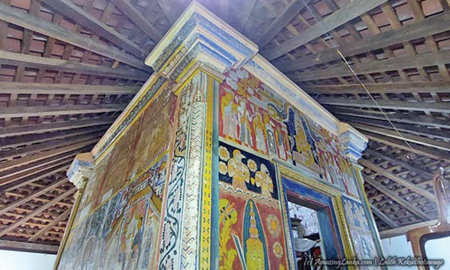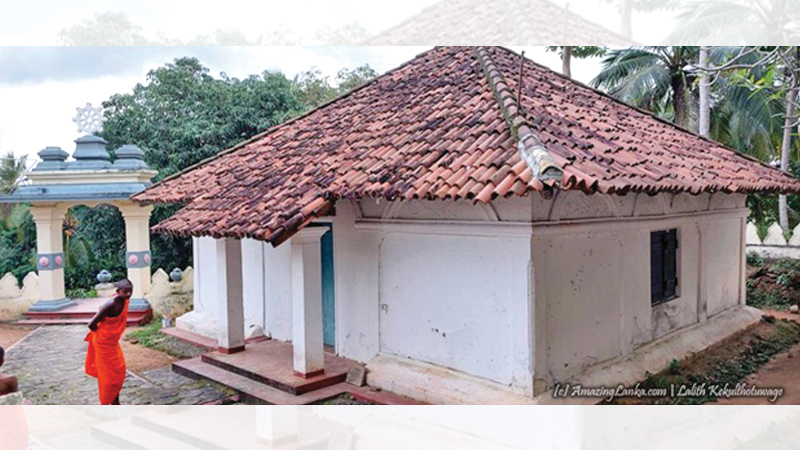Matara is a well renowned city in the Southern province. I was born in Matara in post-colonial Ceylon. Life in Ceylon was very different during that time following the transition of Ceylon from the British Administration. Turn of events was very different from those of today. My mother, a teacher, was stationed at Nadugala Watagedara Buddhist mixed school.
The temple is just less than ten minutes drive from Nadugala junction on the main highway, going past the school in close proximity to Attudawa on one side and on the way to Palatuwa at the far end. Located in a calm and serene atmosphere, the sacred place, the proud landmark of the area was Nadugala Watagedara Sri Sudharmaramaya. The site was a hilly, rocky patch of land.
Sanghawasa
As you enter the premises, the Sanghawasa is found at the bottom in the ground level where erudite, scholarly bhikkhus reside. They are playing a dominant role in the religious life of the people. The temple progressed well under the leadership of the then Nayaka Thera Ven. Ratanapala Thera. Buddhist ceremonies such as dana, pirith and Katina poojas were performed with the participation of the devotees.
 Tampita Pothgul Vihara – the main temple is on a height located in a calm and serene atmosphere. To reach the top, there was a steep flight of steps. I believe the climb comprising steps has seen a lot of changes for the better now. In the holy spot in a rich, natural setting, there was the Buddhist Image House, adding majesty and glory to the entire premises.
Tampita Pothgul Vihara – the main temple is on a height located in a calm and serene atmosphere. To reach the top, there was a steep flight of steps. I believe the climb comprising steps has seen a lot of changes for the better now. In the holy spot in a rich, natural setting, there was the Buddhist Image House, adding majesty and glory to the entire premises.
It was a structure built on a wooden platform which rested on a number of stone stumps about 3 to 4 feet tall. Much care had been taken to ensure its strength. Among the other unique features of the Mandiraya was the seated Buddha image for the devotees to worship. Hence this came to be known as Tampita Pothgul Vihara. This bears strong resemblance to Kandyan architecture. This name is probably a later development which I can’t remember during my time. This reveals our hidden treasures shedding light on our cultural heritage.
Glittering stupa
Then facing this sacred building, in the centre is the glittering stupa with all the requisites for offering flowers, adding beauty to the sacred grounds where devotees offered Naa mal flowers obtained from trees around the village. Then the Bo tree with its outspreading branches symbolising the enlightenment is found in the same premises on a low level, facing the road to the adjoining village.
Little away from the Chetya I remember to have worshipped the reclining, serene Buddha image, reflecting strong feelings of loving kindness, in the Viharageya found in the backdrop of a naturally located hilly area. On the whole, the temple with rich historical legacy had all the sacred features of a great temple.
I have a pleasant recollection of the temple. Though I attended a prestigious, Christian girl’s school in Matara, most of the stanzas (Gathas) deep rooted in me are what I learnt from the temple. On very many days I remember to have observed Ata Sil there. Deep down me, i still feel the joy I went through when visiting the temple on the evenings of Poya days with families of Ralahami, Vedamahattaya and a few others close by. The Principal of the school where we lived took the children on procession on Poya days and on important occasions.
The advent of new technology in transport and the network of highways have given access to the temple from every quarter which was non-existent then. Now it has become a centre of tourist attraction too.
Rupa Banduwardena, Melbourne, Australia









